What are the manual klups and how to choose them?
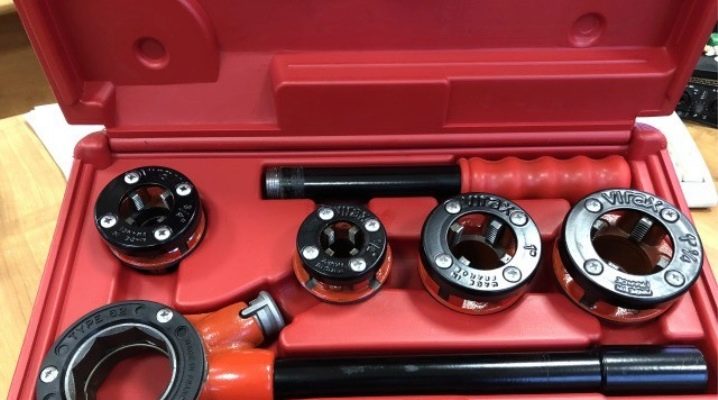
A tool that leaves threads on pipes, bolts, studs, and other metal or plastic products is called klupp. The device can be used not only for making notches, but also for restoring worn threads.
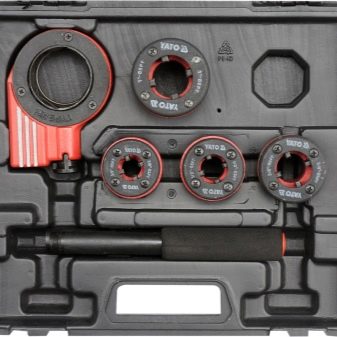

general description
A manual thread cutter is a very effective tool that every craftsman should have. This tool is used not only on an industrial scale, but also at home.
The device consists of cutters of different diameters and a holder. Most often, the product is made of high-strength cast metal. The cutter is somewhat reminiscent of a simple die. In shape, it is a small cylindrical part that has a recess to evacuate metal chips that are formed during threading.

Thanks to the handle, the work becomes easier, and not as much effort is expended as when working with a simple scraper. And because of the special grooves, the fit and grip of the clamp are better.
There are ridges inside the heads, which leave notches. The first turns are usually not so sharp, and they only outline the course. Subsequent turns begin to make deeper threads. Accordingly, the thread becomes sharper with each turn.
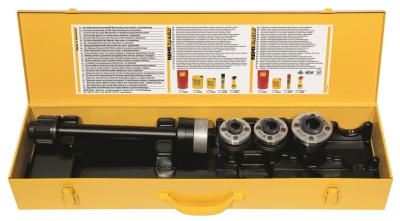
The attachments have two types of threading: the right one, which is found on all products and pipes, and also belongs to GOST, and the left type, is less common and is used for restoration work.
In addition, the heads have two types of measurement: inches and millimeters. The main difference between the two is that each has a different threading angle. Measurements in inches are considered more relevant, even GOST relies on this view.
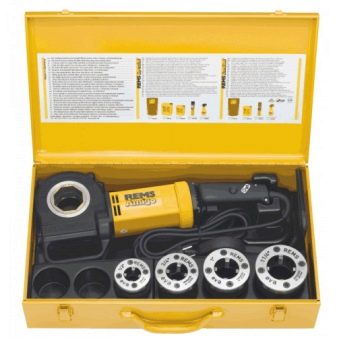
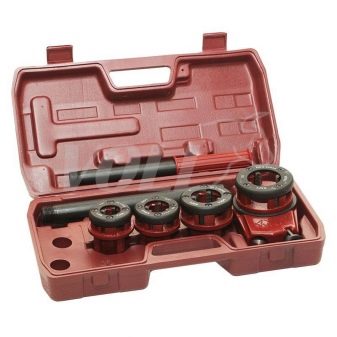
Species overview
Pipe couplings are divided into 4 types, which are most often presented on the market. Each of them is suitable for a specific type of work and threading.
-
Oblique klupps... The product belongs to the simplest threading tools. Used for notches on tie rods or bolts. The oblique klupp has a size range from 1 to 5, and is presented in the form of an oblong frame with two handles and a hole in the middle. The frame can be moved to the side using movable nozzles, which are adjustable with a stop screw. In this case, the nozzles are called grommets, and in order for the thread to be applied correctly and the tool to work properly, it is necessary to correctly install the grommets in the die, following the instructions.
This can be done thanks to the numerical designations, which must match. Otherwise, there is a risk of tool breakage, or the inability to correctly apply a notch to them.
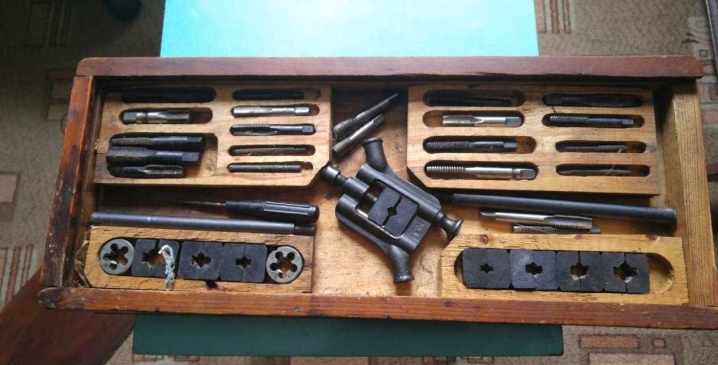
- Klupp Mayevsky considered a classic among klupps. It is this type that can always be found in stores or workshops. The mechanism of the tool is simple, and consists in the fact that there is a frame with a groove, in it with the help of a persistent cover, movable girders are fixed. Special screws adjust the size of the dies. The frame has a guide flange that is connected to the guide bushings. Rotation of the dies is carried out by rotating the handle. Since all tools have a limitation, Mayevsky's die cutters are suitable for threading pipes up to 2 inches in diameter. But the sets contain heads of various sizes, and with the help of special adapters, you can increase or decrease the size range. The tool is lightweight, easy to use, and the design itself is not cluttered with unnecessary accessories.

- Pipe die practically no different from the previous model. The size range of the dies is almost identical, as well as the appearance. The body is made of cast iron, on the outside there are 3 grooves for guiding the dies, and on the inside there are 4 slots for purlins. The model runs are divided into two sets. The first ones have the ability to apply a notch on only one side, the second - double-sided.
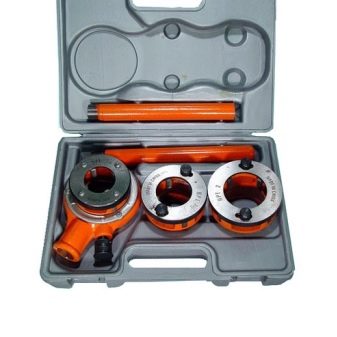
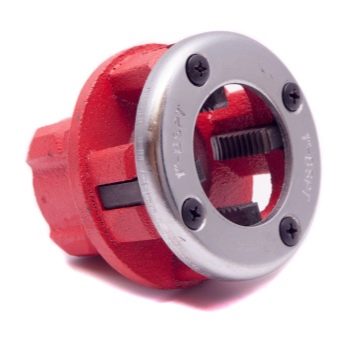
- Ratchet clutch - modified tool. It combines the simple concept of the dies with the handle, only an additional mechanism was placed in the handle itself to facilitate work. This allows you to exceed productivity several times, especially in hard-to-reach places. But there is a downside - if used incorrectly or too aggressively, the ratchet can break, and it cannot be repaired. Therefore, you should not press too hard on the tool.
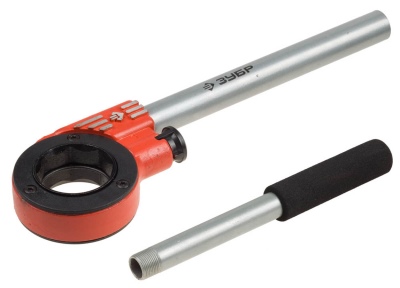
The best manufacturers
The stores offer a wide variety of instruments. This also applies to manual klups. There are both expensive brands and more budgetary ones. Let's take a look at some of them.
-
"Bison Expert 28271 - 1"... Country of origin - Russia. Good quality and reliability. The set includes replaceable cutters. Weight 0.86 kg. The direction of the thread is right-handed. Suitable for working with tapered pipes. A budget option for homework.
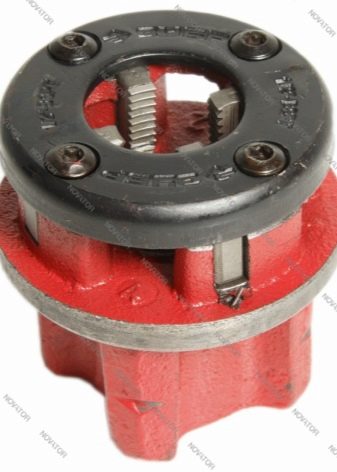

-
Ridgid 12 - R 1 1/2 "NPT. Made in the USA. Right hand thread. All elements are made of alloy steel. Weight 2.8 kg. Thanks to quality materials, it has a long service life. Practicality and functionality are also noted.
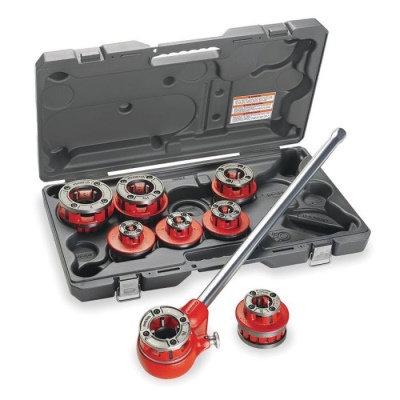
- Rems Eva (Cet R 1/2 - 3/4). Made in Germany. This model is compact and lightweight, which allows you to work in small spaces where it is impossible to have a large turning angle. The nozzles change without much effort, and there are well-designed holes in the heads through which chips are removed during operation.
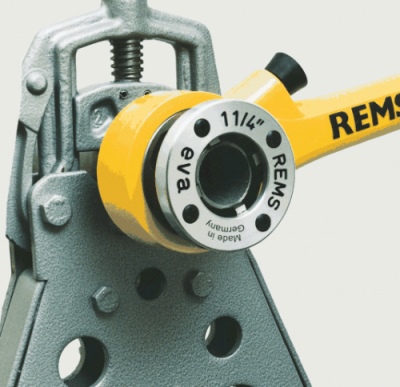
Selection Tips
The price segment for thread cutting die is quite extensive. Before buying, you need to answer some questions: how often the tool will be used, and for what work.
These simple questions will help you figure out which models to look out for. If the tool is necessary for the home, then it is best to consider inexpensive models that, with infrequent use, will last a very long time.
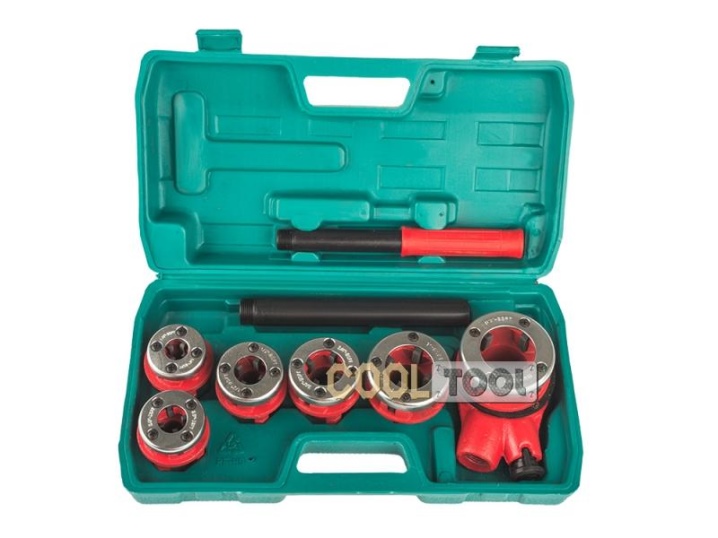
If for professional work, then it is better to take a closer look at more expensive models or electric plugs.
How to use it correctly?
Any tool requires proper care and proper use. This will save the device and extend its lifespan.
-
The pipes must be properly secured before operating the tool.... You can use clamps for this. Since a large force will act on the die, it is necessary that all elements are correctly fixed.
-
The insertion of the cutters directly affects the quality of work, therefore, it is best to seam the pipe before starting.
-
Klupp must be used very carefully, and best of all during work. use coolants and lubricants.










The comment was sent successfully.